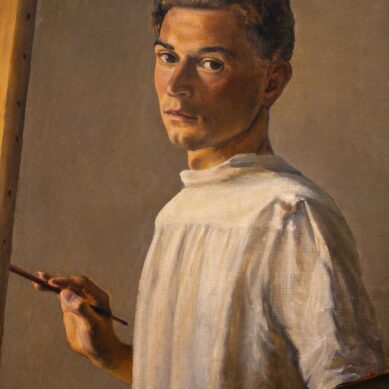You searched
Painter
Renzo Crivelli
Are you interested in the sales or the purchase of his artworks?
We buy works of this artist
and of other painters and sculptors from the 16th century to the first half of the 20th century
The Berardi gallery offers a free and without obligation service for evaluation of ancient and modern art . To find your way in the art market, very complex and full of nuances, it is better to rely on a professional consultant who can answer fast and concretely to your needs. The clarity of the answers will resolve effectively the need to estimate or sell an asset.
Contact us immediately without commitment
Answers also in 24 hours:
Renzo Crivelli
Renzo Crivelli
Biography
Renzo Crivelli was born in 1911 in Sarsina, a town in the province of Forlì, but moved with his family to Florence as a child. It was here that his education took place: he attended the Academy of Fine Arts and followed the teachings of Felice Carena, who took him under his protective wing. His meeting with fellow student Pietro Annigoni was also fundamental, from whom he received a recipe for a tempera grassa (oil tempera) that allowed him greater technical preciousness than oil painting. This will in fact be the artist’s favourite practice.
The legacy of the late 19th century Tuscan tradition
The painter mainly picked up the Tuscan figurative heritage of the late 19th century, drawing inspiration, in terms of the setting and choice of colours and chiaroscuro, from Macchiaioli painting, which remained his constant artistic reference. His production moves between landscapes, still lifes, portraits and, in his later years, religious subjects.
In the exhibition field, he took part in various art exhibitions throughout the 1930s: in 1930 he took part in the Florence Exhibition with Case al Savacchio; the following year he presented Paese – Mattino (Country – Morning); while in 1933 he exhibited Case rosse (Red Houses) at the Sindacale Fascista (Fascist Union) in Florence.
In 1935, he returned to the VIII Interprovincial Exhibition of Tuscany with four works, two Drawings, Pagliai and Paese d’estate. In wartime, he also had a personal exhibition held at the Lyceum in Florence, which, despite the dramatic wartime period, met with much critical acclaim, gaining recognition from the classical philologist and art critic Giorgio Pasquali and from Roberto Longhi.
His painting is rooted in the noblest Tuscan tradition, but at the same time expresses itself in a language of absolute modernity.
The ‘Il Chiostro Nuovo’ movement: the spiritual component
From the war years, the harmony that resides in his paintings gives way to restlessness. The artist began to question the meaning of life, focusing more on the psychological and symbolic aspect of landscapes and portraits. In 1942, he exhibited two etchings, Allegory of Life and The Graces, at the Exhibition of Tuscan Artists at the Interprovincial Fascist Fine Arts Syndicate held in Dusseldorf, which bear witness to his inner change.
In the post-war period, he founded with Giorgio La Pira and other artists the group ‘Il Chiostro Nuovo’, a cultural and artistic coterie guided by strong spiritual references, born with the intention of establishing a profound and stimulating reflection from a literary, artistic, but above all religious point of view. The movement also availed itself of a popularising organ such as the magazine ‘Il Chiostro nuovo’, of which Renzo Crivelli himself became director.
Cultural renewal through Christian education
This new spiritual vision led the artist to devote himself from the 1940s onwards above all to sacred art, recounting evangelical and biblical episodes with tenderness and pathos inside a number of churches, particularly in the Tuscan area. In the decorative scheme, he merges modern language with Renaissance, also making himself a follower of the same educational intent. The Church of the Madonna della Tosse in Florence bears his signature.
In 1952, he participated in his only Venice Biennale with two works that were, however, created during the years of the Second World War. In fact, he presented Ritratto di mia moglie (Portrait of My Wife), executed in 1940, and Bimba (Child) of 1945.
In the following decades, however, he always remained firmly attached to the figurative, despite the abstract and conceptual researches contemporary to him.
Renzo Crivelli was the painter of morality and inner rigour, two qualities not only of his character, but also of the pictorial language of which he was the spokesman. The artist died in Florence in 1997, at the age of eighty-six.
Emanuela Di Vivona






